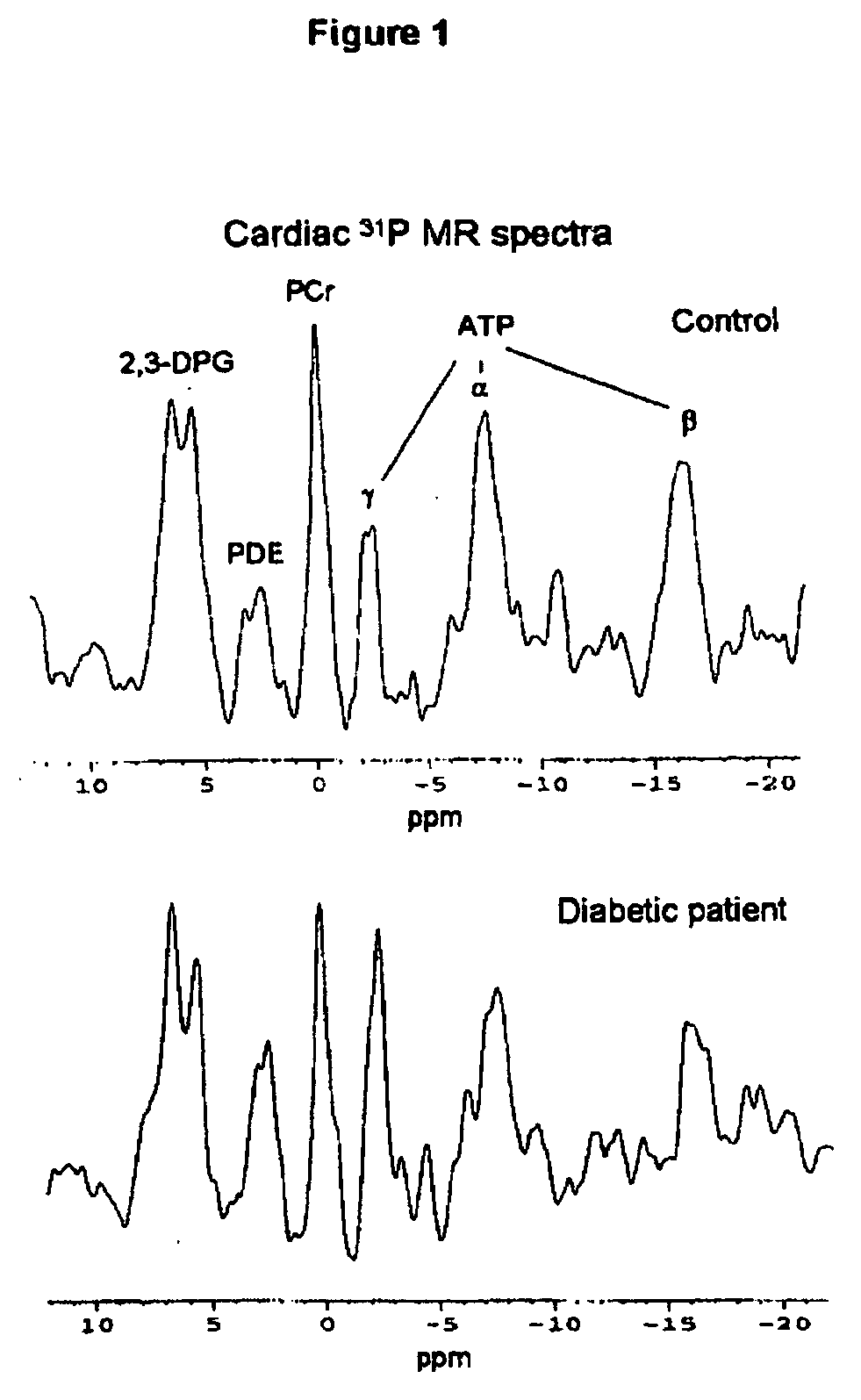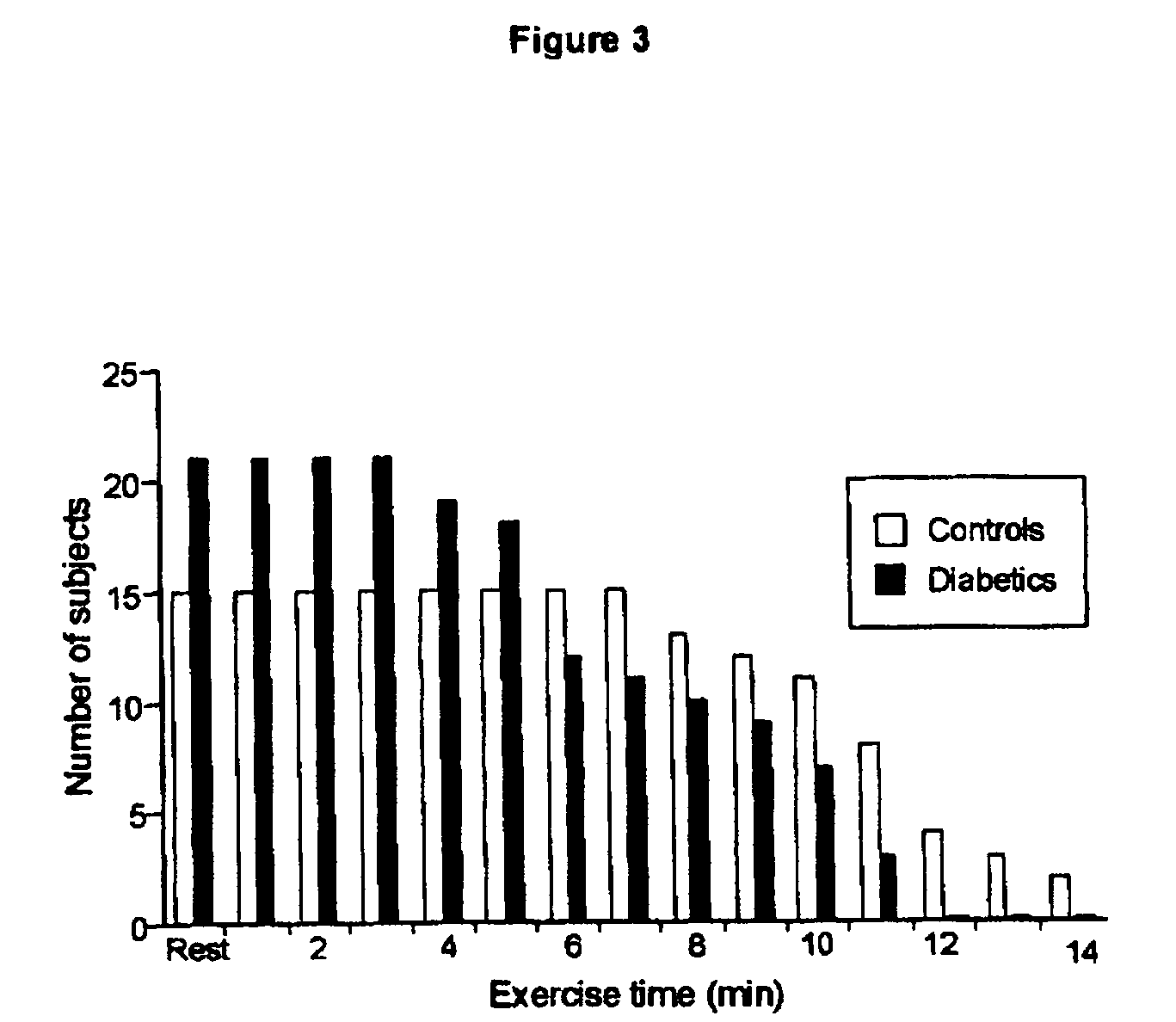Treatment of muscle fatigue
a technology for muscle impairment and fatigue, applied in the direction of diagnostic recording/measuring, drug composition, biocide, etc., can solve the problems of affecting cardiac function, altering cardiac energetics in healthy subjects, etc., and achieve the effect of significant alteration of high-energy phosphate metabolism
- Summary
- Abstract
- Description
- Claims
- Application Information
AI Technical Summary
Benefits of technology
Problems solved by technology
Method used
Image
Examples
example 1
Subjects and Protocol
[0068] Patients with type 2 diabetes (n=21) aged between 18 and 75 years with no evidence of cardiovascular disease or ECG-detectable evidence of ischemia were included in this study. Five patients were diet-controlled only, 6 patients each were treated with either a sulfonylurea drug or metformin, and 4 patients were treated with metformin and a sulfonylurea. Patients on insulin therapy were excluded. Patients were matched for age, sex and body mass index with healthy control subjects (n=15).
[0069] All procedures were conducted on the same day, at the same time of day, for each subject. Subjects were fasted overnight for 12 h before blood sampling and echocardiography. After a small breakfast, the cardiac (rest) and skeletal muscle (exercise) magnetic resonance spectroscopy (MRS) protocols were performed and the subjects had lunch. For the near-infrared spectrophotometry (NIRS) measurements of muscle oxygenation, the MRS exercise protocol was repeated outsid...
example 2
[0084] In a further experiment, cardiac energetics, (phosphocreatine (PCr) / ATP ratios), and function were assessed using magnetic resonance (MR) spectroscopy and imaging, respectively, in 19 healthy subjects before and after two weeks on a high-fat, low-carbohydrate diet and two weeks after returning to their normal diet. The intention was to study whether a high-fat, low-carbohydrate diet alters cardiac energetics in healthy subjects.
Methods
Subjects and Protocol
[0085] Nineteen healthy, non-obese subjects volunteered to undergo a high-fat, low-carbohydrate diet for two weeks. Of these 19 subjects, 12 were also studied two weeks after stopping the diet, to determine reversibility of any dietary effects. In another subgroup of 6 subjects, plasma metabolites, cardiac energetics and respiratory quotients were measured daily during the first week of the diet. Subjects fasted for 12 hours (overnight) before samples of blood were taken and cardiac MR measurements (see later) were perf...
PUM
| Property | Measurement | Unit |
|---|---|---|
| Molar density | aaaaa | aaaaa |
| Concentration | aaaaa | aaaaa |
Abstract
Description
Claims
Application Information
 Login to View More
Login to View More - R&D
- Intellectual Property
- Life Sciences
- Materials
- Tech Scout
- Unparalleled Data Quality
- Higher Quality Content
- 60% Fewer Hallucinations
Browse by: Latest US Patents, China's latest patents, Technical Efficacy Thesaurus, Application Domain, Technology Topic, Popular Technical Reports.
© 2025 PatSnap. All rights reserved.Legal|Privacy policy|Modern Slavery Act Transparency Statement|Sitemap|About US| Contact US: help@patsnap.com



